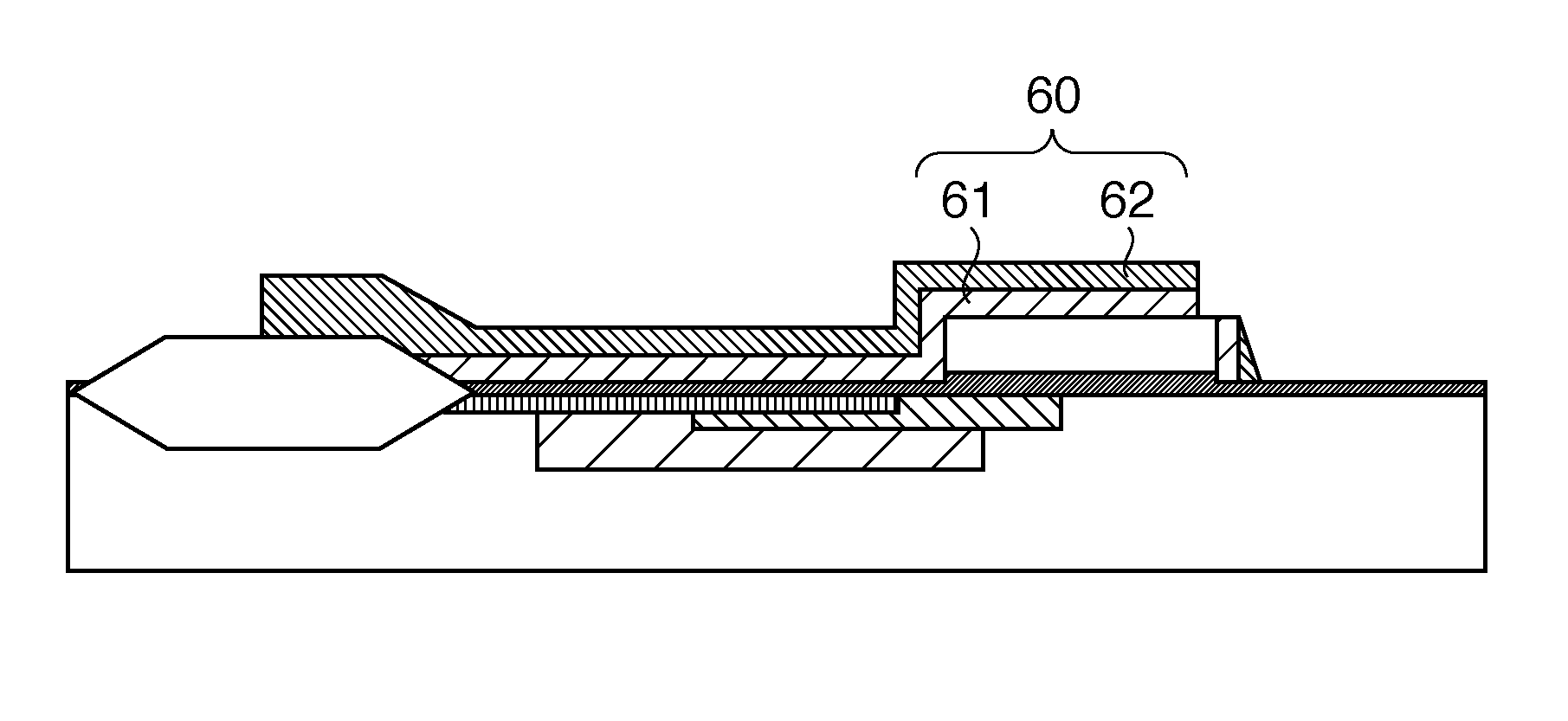Manufacturing method for a solid-state image sensor
- Summary
- Abstract
- Description
- Claims
- Application Information
AI Technical Summary
Benefits of technology
Problems solved by technology
Method used
Image
Examples
first embodiment
[0048]A manufacturing method according to the present invention shall be described using FIGS. 2A to 2H.
[0049]In the present embodiment, the charge storage region is assumed to be N-type.
[0050]In the step illustrated in FIG. 2A, the element isolation unit EI and an oxide film 522i are formed upon the semiconductor substrate SB. The oxide film 522i is formed at a thickness of, for example, 50 to 150 Å. A polysilicon layer 521i is then formed upon the oxide film 522i.
[0051]In the step illustrated in FIG. 2B, a resist pattern RP1 is formed so as to cover a position in which a gate electrode is to be formed.
[0052]In the step illustrated in FIG. 2C, the gate electrode 521 is formed by etching the polysilicon layer 521i using the resist pattern RP1 as a mask. Furthermore, the oxide film 522 is formed by etching part of the oxide film 522i (a portion extending to a predetermined depth from the surface) using the resist pattern RP1 as a mask.
[0053]In the step illustrated in FIG. 2D, a resi...
second embodiment
[0071]Next, a manufacturing method for a solid-state image sensor in the case where the charge is stored as holes shall be described using FIGS. 2A to 2H.
[0072]FIGS. 2A to 2D are exactly the same as the case of electrons and thus descriptions thereof shall be omitted.
[0073]In the step illustrated in FIG. 2E, the semiconductor substrate SB is implanted with P-type impurity ions using the resist pattern RP2 as a mask, thereby forming the charge storage region 511i of the photoelectric converting unit 51. The P-type impurity in this step uses boron as its primary component. The dose of the P-type impurity is, for example, 5×1011 to 5×1013 / cm2. The acceleration energy of the P-type impurity is, for example, 50 to 150 KeV. The angle of the P-type impurity implantation is, for example, an angle α, approximately 0 degrees relative to the normal line of the semiconductor substrate.
[0074]The step illustrated in FIG. 2F includes the conditions of the RTA process, and is exactly the same as th...
third embodiment
[0081]A different cross-sectional structure of a photodiode to which the manufacturing method of the present invention can be applied is illustrated in FIG. 3.
[0082]The following descriptions shall focus upon the differences with the first embodiment.
[0083]A photoelectric conversion apparatus 1j includes a pixel array PAj. Each pixel Pj within the pixel array PAj includes a photoelectric converting unit 51j. The photoelectric converting unit 51j further includes a transfer region 513j. The transfer region 513j is disposed laterally to the surface region 512. The transfer region 513j extends from between the charge storage region 511 and the surface region 512 toward the charge-voltage conversion unit 53. Accordingly, when the transfer transistor 52 is turned on, the charge stored in the charge storage region 511 can be easily transferred to the charge-voltage conversion unit 53. In other words, the efficiency of the charge transfer from the photoelectric converting unit 51j to the c...
PUM
 Login to View More
Login to View More Abstract
Description
Claims
Application Information
 Login to View More
Login to View More - R&D
- Intellectual Property
- Life Sciences
- Materials
- Tech Scout
- Unparalleled Data Quality
- Higher Quality Content
- 60% Fewer Hallucinations
Browse by: Latest US Patents, China's latest patents, Technical Efficacy Thesaurus, Application Domain, Technology Topic, Popular Technical Reports.
© 2025 PatSnap. All rights reserved.Legal|Privacy policy|Modern Slavery Act Transparency Statement|Sitemap|About US| Contact US: help@patsnap.com



